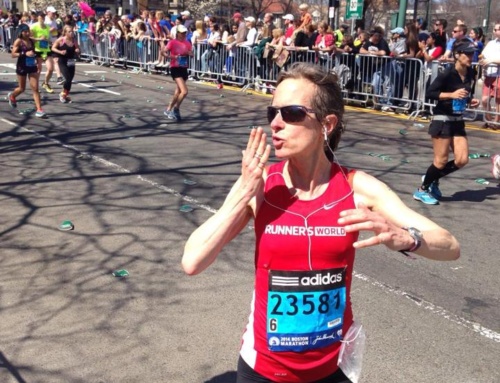I swear it was New Year’s Eve just yesterday, and my entire family was doe-eyed and dreamy over snow days and hot cocoa.
Fast-forward to today—we are out of cocoa, and the weather is as fickle as a Kardashian manicure. We are (almost) over the major snow and drastically cold temperatures, but I get weather whiplash bouncing between 10-degree flurries one day and a sunny 65 the next. But we’re getting there. Pretty soon it will be time for me to finally shave my legs!
As temperatures are on the rise just about everywhere, here are two simple pieces of advice to remember this spring.
Wear sunscreen.
This is not breaking news. But sometimes the act of buying a bottle of sunscreen and stashing it under the bathroom sink doesn’t translate to wearing it every. single. day.
In the last year, I know three different women who have had skin cancer scares and significant procedures to remove the malignant areas. (Think reconstructive nose surgery, gnarly incisions, and lots and lots of stitches.) We know sunscreen is important, but I want to drill it into you again: sunscreen is so very important.
BAMRbassador Cortney kept noticing a spot on her forehead near her hairline. It would scab over and almost heal, but the cycle kept repeating. After finally realizing something more than irritated skin was going on, she went straight to the dermatologist who quickly diagnosed her with Basal Cell Carcinoma. Cortney underwent Mohs surgery, where a doctor will removes layers of skin bit by bit and tests them for malignant cells. They take off as many layers as they need to in order to get all the cancer. Obviously, the longer you ignore skin cancer, the more difficult the surgery.
“The surgery team actually had to make the incision larger to be able to close it without puckering. They placed some internal stitches and then did a running stitch on the outside. I ended up with an incision that was close to two inches long,” Cortney said.
What should you do? Look for a broad spectrum sunscreen that protects against UVA and UVB rays. If you’re going to be in the sun for a while (think long runs, etc.), go for SPF 50 or higher and one that can handle sweat.
Friends, this is not the time for portion control. A small dollop will NOT do you good, so be generous in application. Get your cheeks and nose, but don’t stop there. Cover all of your forehead and into the hairline, your ears, chin, lips, and neck. If you can see your skin, so can the sun. When you step out of your post-workout shower, apply a mineral sunscreen like this one to your face. Add more sunscreen to arms and legs if they’re going to be exposed.
Cortney is on top of her skin care routine now. “Based on my dermatologist’s recommendation, I switched to a mineral sunscreen that is separate from my moisturizer for daily use. I exercise earlier in the day which helps me avoid the direct sun. I still wear hats when running and on the water to provide extra protection. I am also a skier and make sure to apply sunscreen when on the slopes. The sun isn’t only out when it’s hot. Finally, I now see the dermatologist two to three times a year to do skin checks.”
Check the temperature, then dress as if it’s 15 degrees warmer.
I make the same mistake every year: 40 degrees feels chilly when I first step outside, but fifteen minutes into my run I’m dripping sweat under my fleece leggings.
The rule of thumb is to add about 15 degrees to the actual temperature, so as your body heat rises from your activity, you’re not overdressed and overheated.
Layers are your new BFF. Wear light layers to keep you comfortable as you warm up, but make sure they’re easy to peel off once your blood is pumping. Most runners would rather feel a little chilly the first 10 minutes of a run than overheated for the last hour.
I know “cold” can mean different things to different people, and you know yourself best. If your fingers turn blue anytime it gets below 60 degrees, you obviously need to address that. And 50 degrees in overcast drizzle feels like a different universe from 50 degrees in the blazing sun with zero shade. So use your best judgment.
Finally, be kind to yourself as it gets warmer. Those first few runs in hotter temps will raise your heart rate and your average pace will drop. You will question your fitness and curse every sweat gland on your body. Give yourself time to adapt.








I just had my stitches removed yesterday from my MOHS surgery. I also had squamous cell carcinoma and have a long scar. I can’t emphasize sunscreen enough and now carry it with me wherever I go. Get out and exercise and enjoy life but be prepared for the sun.
Sunscreen every day, no matter what!! I use a tinted one like the one you linked or this one EltaMD UV Physical Tinted Mineral Sunscreen, Chemical-Free Face Sunscreen for Sensitive Skin and Post-Procedure Skin, Non-Greasy, Broad-Spectrum SPF 41, 3.0 oz https://www.amazon.com/dp/B00C8FVZZY/ref=cm_sw_r_cp_api_glt_i_2ZMX9PGTA21W8780VXK5 in place of foundation.
My father died of melanoma at age 59 (I am now older than he!) after years as a confirmed sun-worshipper who never ever wore sunscreen and whose skin was either white or shades of red. Staying out of the sun from 10-3 and wearing sunscreen/other protection when you are is critical. I swear staying out of the sun is why people thing I don’t look my age :)
Seriously, skin cancer sucks. Do what you can. Thank you for this important reminder!
Had the bottom lobe of my right lung removed by robotic assisted surgery due to metastatic melanoma. I had 2 previous skin melanomas and about a dozen basal cell carcinomas, so YES use that sunscreen! I’m fine now, but a year of immunotherapy took a toll on my running. I’m finally getting back to precancer mileage and pace.
Thank you for the great advice.